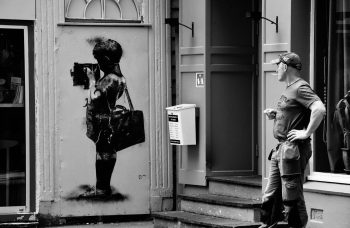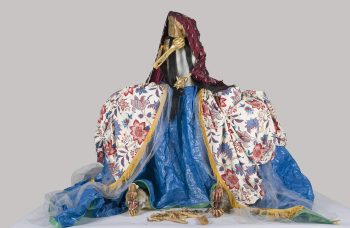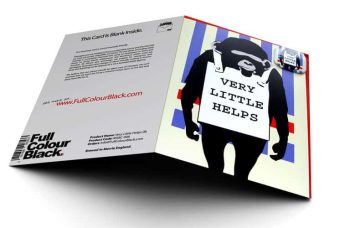Last week, Virginia officials announced that a statue of Confederate Army General Robert E. Lee would be taken down from a main thoroughfare in the state’s capital of Richmond. Then, just days later, protesters in Bristol, England toppled a monument of Edward Colston and threw it into the Bristol harbour. Undoubtedly, the big question in Bristol will become that which many states in the US are toiling with: “What do we do with the statue?”
Well, Banksy, a native Bristolian himself, took to Instagram today to put his idea out there. A black and white illustration shows the statue of Colston, back atop his pedestal, being pulled down by four protesters, essentially capturing the events of June 7th.
“What should we do with the empty plinth in the middle of Bristol,” asks Banksy. “Here’s an idea that caters for both those who miss the Colston statue and those who don’t want it. We drag him out of the water, put him back on the plinth, tie a cable round [sic] his neck and commission some life size bronze statues of protesters in the act of pulling him down. Everyone happy. A famous day commemorated.”
The Bristol statue memorialized the life and work of Colston, a 17th century slave trader with ties to the Royal African Company, which was responsible for the transport of more than 80,000 African slaves in the late 1600s. The statue has stood in the heart of the city for more than 100 years, yet it has had no indication of Colston’s extensive relationship with the slave trade. In recent years, the statue has drawn attention, and in 2018, local council decided to create a plaque that would contextualise Colston’s place in history. That effort, though, was abandoned in 2019 when officials could not come to an agreement.
Banksy’s suggestion followed an artwork her created in response to protests that have swept through the US, UK, and other places after George Floyd was killed by a Minneapolis police officer as three officers stood by on May 25th. A candle, lit in memorial to someone, catches the corner of an American flag on fire. The portrait is undistinguishable, perhaps serving as a placeholder for any of the many men, women, and children of colour who have been killed by police in the US and elsewhere. “People of colour are being failed by the system. The white system,” wrote Banksy. “At first I thought I should just shut up and listen to black people about this issue. But why would I do that? It’s not their problem. It’s mine.”
Since, protests began, monuments to people who historically stood for and prospered due to racist systems have been targeted. In addition to the Bristol and Virginia monuments (the removal of Lee has been temporarily halted by an injunction), statues in Alabama, Tennessee, and Pennsylvania have been defaced or officials are removing them.
Banksy’s suggestion has already garnered over 900,000 likes and 6,000 comments, mostly praising the elusive artist’s idea. Even if it isn’t adopted by the city, perhaps it will act as a catalyst for the conversation concerning how we memorialise the demonstrations we’re seeing today, seeking equality for BIPOC (Black, indigenous, and people of colour) peoples everywhere.
Edited: June 12, 2020 for spelling error.





